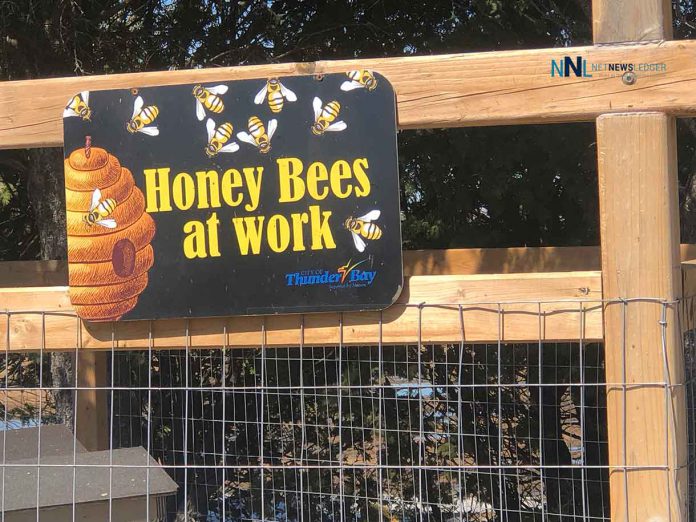THUNDER BAY – LIVING – As the first signs of spring begin to emerge, many homeowners are eager to start tidying their yards.
It is already apparent at the local garden centres as people are mulling over the new lawn mowers, rakes and plotting out their summer yard work. However taking a break until it warms up a bit more, it a better idea than rushing into that endless yardwork.
However, environmental experts urge restraint with early spring lawn maintenance, particularly raking, to protect the bees and other vital pollinators awakening from their winter dormancy.
The Importance of Delayed Spring Cleaning
Early spring is a critical time for bees and other pollinators, who rely on the shelter provided by leaf litter and other garden debris to survive the last of the cold weather. These materials not only offer insulation against chilly nights but also house a variety of insects and larvae, which are crucial food sources for birds and emerging pollinators alike. By postponing raking and other yard clean-up activities, homeowners can play a significant role in supporting local biodiversity and the health of pollinators, which are essential for pollinating crops and wild plants.
How Unraked Lawns Benefit Pollinators
Leaving leaves and other plant debris on the ground a little longer can provide numerous benefits to pollinators. For bees, especially solitary species and bumblebees, undisturbed ground and leaf litter offer vital nesting sites. These spaces also harbor small insects that provide food for both adult and young pollinators. Additionally, early-flowering plants that may sprout in lawns, such as dandelions and clovers, are significant sources of pollen and nectar early in the season when food is scarce.
Tips for Pollinator-Friendly Lawn Care
To contribute positively to the welfare of bees and other pollinators, consider the following tips for pollinator-friendly lawn care:
- Delay Lawn Clean-Up: Wait until consistent warm weather has set in before clearing your yard of leaves and twigs. A good rule of thumb is to wait until daytime temperatures consistently exceed 10 degrees Celsius (50 degrees Fahrenheit).
- Mow Less Often: Allowing your lawn to grow a bit longer supports wildflowers and provides additional habitat for pollinators. High grass also protects the soil moisture that plants need to grow.
- Plant Native Flowers: Consider planting native flowers and shrubs, which are well-suited to your local climate and provide the best resources for local pollinators.
- Avoid Pesticides: Chemicals used to kill pests and weeds can also harm beneficial insects. Opt for natural pest control methods and embrace a more organic approach to lawn care.
- Create Habitat Features: Adding features like a log pile or leaving a section of your garden wild can create additional nesting sites for bees and other wildlife.
By embracing these practices, gardeners and homeowners can significantly impact the preservation and enhancement of pollinator populations. Protecting these vital creatures supports our ecosystems and ensures the continued pollination of many plants important for food and natural beauty.







